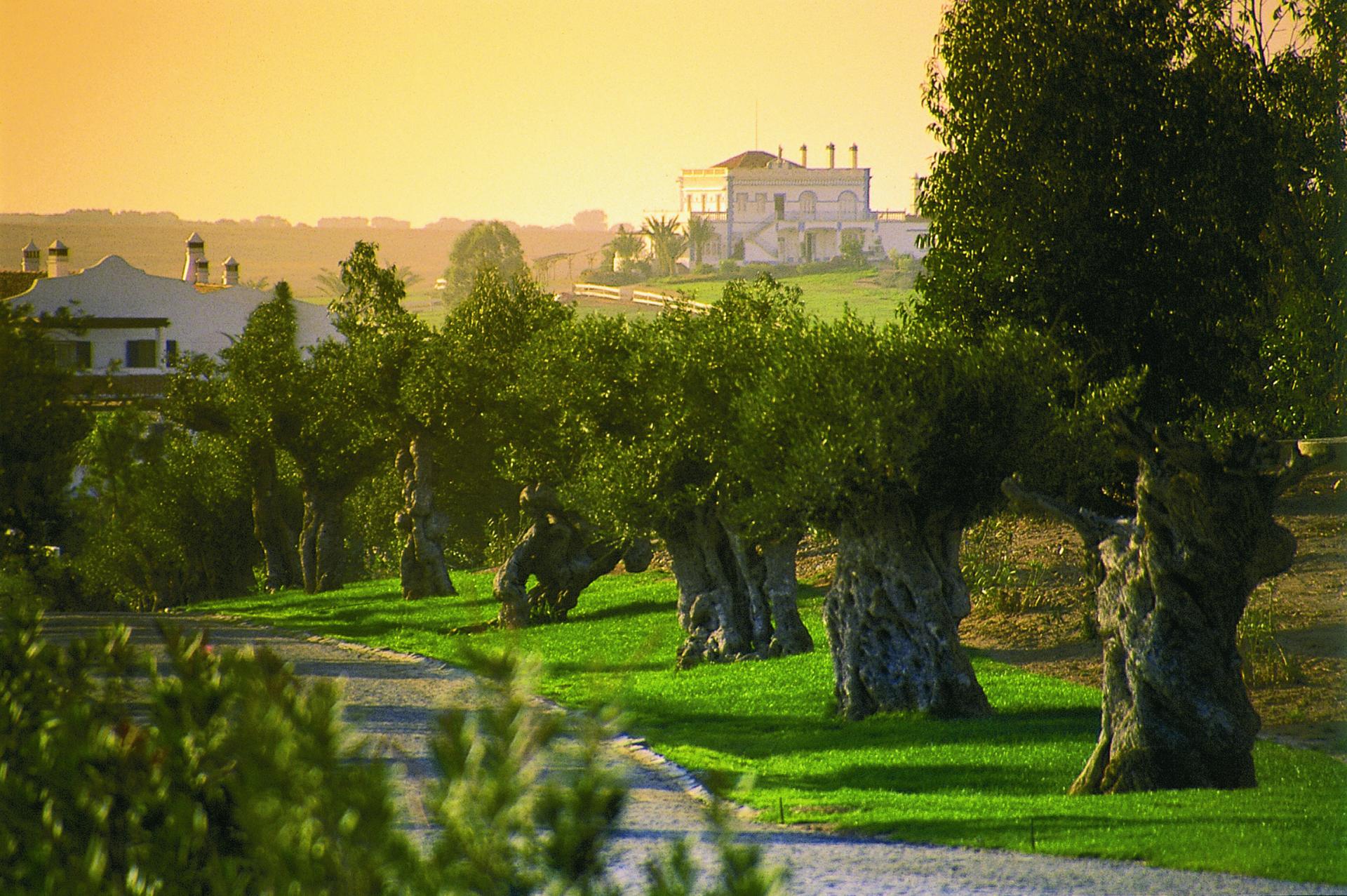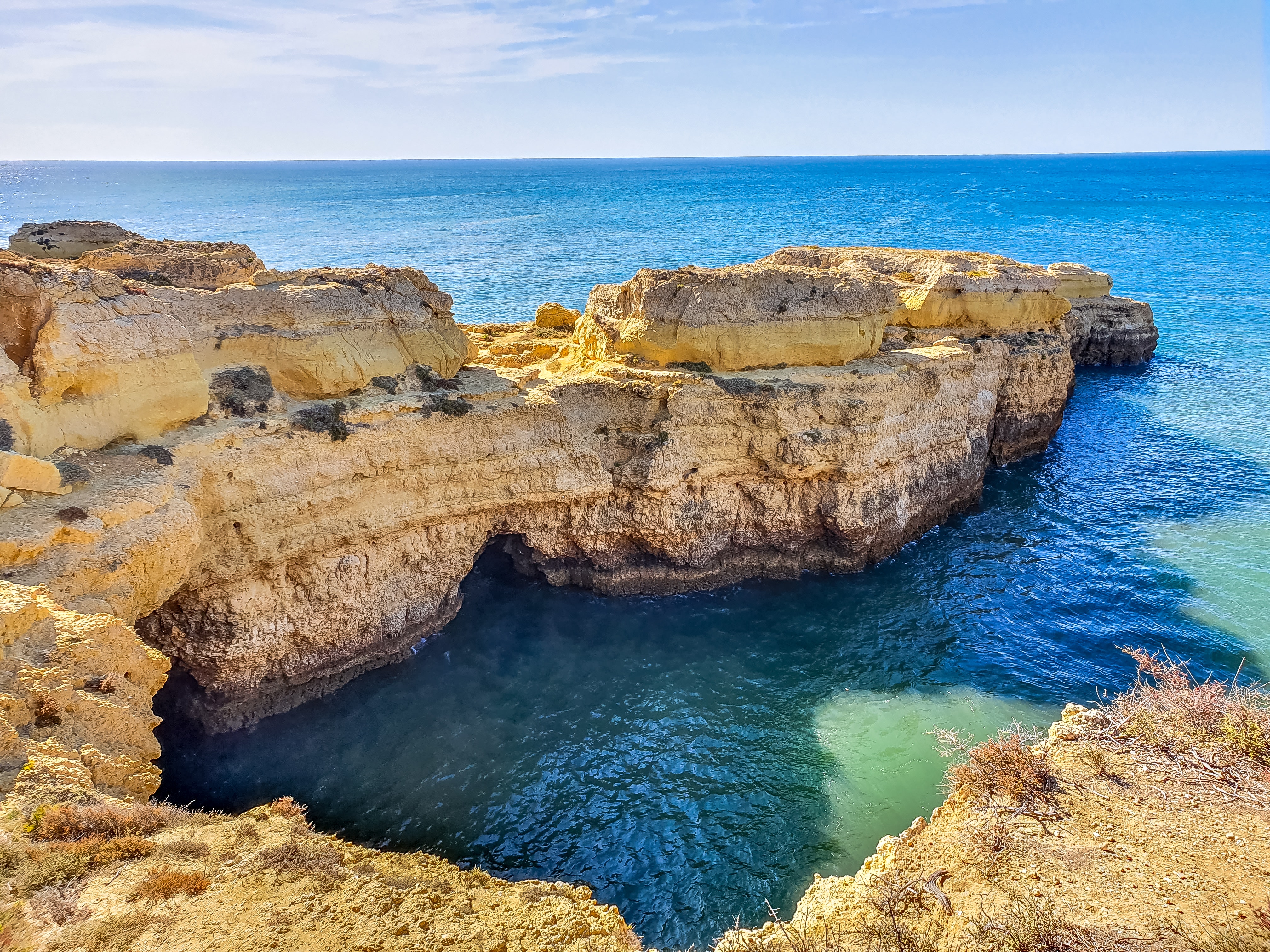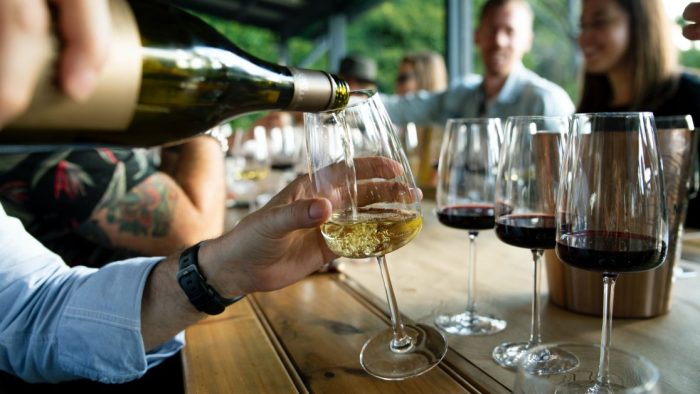Beyond the Tagus River: In and Around Évora – Part I

I’m writing, between sips of my morning bica, from a tiny coffee shop in the sleepy Lisbon neighborhood of Lapa. I look up from my computer screen and the Tagus River opens before me. Today the river is brooding and dark, swept up by strong winds. The water is choppy. I find freedom in Portugal’s 300 annual days of sunshine, but even Lisbon isn’t immune to the onset of fall. The Tagus isn’t glistening in the sun’s light today, but still, it is imposing. The Tagus is a powerful, silent presence in Lisbon. It plays a part in how I experience this city. On morning runs by its banks, the Tagus makes me feel small, reminding me of the power of nature and the relative insignificance of my little life. When I think about this country’s history of intrepid explorers, I’m struck by the water’s role in making the Portuguese an adventurous people. Portuguese poet, writer and philosopher Fernando Pessoa famously wrote “Pelo Tejo Vai-se para o Mundo.” Via the Tagus, one goes to the World. It sounds better in Portuguese.
Exploring Portugal’s land beyond the Tagus is precisely what this article – the first in a series of three – is about. Brownie points if you guessed we’ll be delving into Portugal’s Alentejo region, as ‘Alentejo’ quite literally means ‘Beyond the Tagus’.
You may have heard of the Alentejo. After all, it does account for about one-third of Portugal’s landmass. More and more, the Alentejo is the subject of excellent press internationally. Earlier this year, The New York Times called it ‘a land finely aged like wine’. Last year, USA Today called it the world’s best wine region. The UK’s The Guardian says it’s the new, more affordable Tuscany. Here at Catavino, I’d say we agree. We are big fans of the Alentejo. From food to wine to history to beaches to good old-fashioned country living, the Alentejo seems to have something to please all kinds of travelers.
In this series, we’ll give up our best tips for exploring this vast region. We’ll do it in snippets, starting smack in the heart of it all – in and around the city of Évora. We hope you enjoy this glimpse of what’s Beyond the Tagus.
Around Évora
Évora happens to be the name for many things – a city, a district, a municipality, and the capital of the Alentejo region. We recommend visiting both Évora and its surroundings! In the walled city of Évora, expect enchantment. The city is a magical one that 57,000 lucky people call home. In my first visit, I was most struck by Évora’s unique character. Discovering some cities can feel straightforward, but in Évora, a surprise hides around every bend and behind every church door. Évora is textured, and unearthing its layers is a thrill. The city will charm you with its eclectic identity. It is ancient in its history, diverse in its architecture, youthful in its university life, humble in its demeanor, exquisite in its gastronomy and dynamic in its political identity (my first visit coincided with a huge Communist Party open-air concert in the city center). Outside of the city you’ll find sleepier outskirts. Slow-paced villages where locals all know each other. Roman ruins are replaced by grape vines, spacious plains and small white houses bordered in blue. If you’re looking for an authentic experience, take the time to discover rural Évora and revel in its food, wine, olive oil and cork plantations.
Arriving to Évora
Excellent public transportation will take you to the heart of Évora stress-free. If traveling from Lisbon, taking the train may be a good option. A round-trip ticket will cost about €30, and you can expect a clean and comfortable ride. You’ll be in Évora in about an hour and a half – just long enough to watch a good movie on your iPad or take a soothing nap. When you step off the train, you’ll be less than a mile away from the city center.
The train will work seamlessly if your sights are set within Évora’s city walls, but there’s so much to explore beyond the city! If you have the time and budget, I’d recommend renting a car and exploring the Évora region more broadly. The heart of Évora is a gorgeous 90-minute drive from Lisbon through quaint white-washed villages, rolling wheat fields and cork tree plantations. Expect to see a few farm animals as you share the rustic landscape with horses, pigs, donkeys and cows. For a cheeky laugh as you prepare for your road trip, check out our tips for driving in Portugal!
City Tourism
Let’s start with the highlight, the city of Évora itself. The walled city is a delightful journey through history. It dates back over 2,000 years and has been designated a World Heritage site by UNESCO, which calls Évora a ‘museum city.’ In the architecture, you’ll see vestiges of the people who inhabited and controlled Évora for the past two centuries, for example: Renaissance influences at the Moura’s Gate Square, the Roman-Gothic architecture of the city’s cathedral, the Gothic-Manueline-Moorish style of the Loios Convent and Roman ruins. I was humbled and awed by Igreja de São Francisco’s blue-and-white tiled walls. The Capela dos Ossos, or Bone Chapel, is striking. It houses the skulls and bones of tens of thousands of deceased monks. The stuff nightmares are made of.
For Foodies

I recently posted about the joy of eating fish in Lisbon, but eating in the Alentejo is an entirely different gastronomic experience. The Alentejo is known for its hearty, bold cuisine. The region’s food is flavorful and intense, making ample use of condiments to create full-bodied meals. Traditional dishes are based on what is plentiful locally. The Évora region, smack in the middle of the Alentejo, relies heavily on meat, especially pork. I’ve mentioned the crop fields you’ll see in rural Évora – plantings of wheat, corn, potatoes and green beans. Don’t be surprised to find these ingredients on the menu during a visit.
Just as the city of Évora brings together a mix of cultures that reflects its history, so does the food. Arab influences from the Moorish occupation in the early 700s trace their way through local gastronomy (ignore the plentiful consumption of pork!). Examples include bean-based dishes, bread-based stews and almond-based sweets. Tomatoes are also culinary protagonists. These were introduced by Spanish explorers returning to Iberia from Mexico. You’ll find coriander used liberally in local dishes, as this popular ingredient was used by the Ancient Romans inhabiting Évora in its earliest days. In sum: as you eat your way through Évora, brace yourself for a delicious journey through its history.
Fialho (Tv. Das Mascarenhas 16, Évora)
Before my first visit to Évora, I researched where to eat. Extensively. It seemed that anyone I asked recommended Fialho. I had dinner there and wasn’t disappointed. This family-owned restaurant was founded in 1945. It serves up sophisticated, traditional Alentejo fare in a relaxed, intimate and understated environment. The tapas-style petiscos that preceded our meal were a highlight. I recall that the asparagus topped with eggs, cured acorn-fed ham and aged sheep’s cheese was outstanding.
Taberna Típica Quarta Feira (Rua do Inverno, 16/18, Évora)
The appeal of Taberna Típica Quarta Feira is its authenticity. Here, you’ll eat and drink like a true Evoran in a relaxed, rustic environment. Taberna Típica Quarta Feira is a short walk from Fialho, in the heart of the city. It’s closed on Sundays, but otherwise, open daily for lunch and dinner. Be careful to check opening times! The lunch service begins at 1:30, so best not to show up on an American schedule. Let yourself be tempted by the exceptionally tasty house specials, which change daily.
L’And Restaurant L’And Wine Hotel, (Montemor-o-Novo)
Yet again I present you with an opportunity to splurge. L’And Restaurant is a modern, foodie-inspired take on the cuisine of the Alentejo and Portugal at large. The food is seasonal and locally sourced, either from organic or biodynamic producers. L’And Restaurant boasts a Michelin Star, and I’m afraid the price tag is commensurate. Book a table at L’And for a refined culinary perspective that in a subtle way highlights the various Eastern influences on Portugal’s cuisine. If you have a healthy appetite, you may want to opt for the tasting menu. L’And’s wine list is a joy to read and may inspire ideas for your home cellar! Consider ordering L’And’s excellent-value house wine. With a full body, creamy palate and rich black fruit profile, it’ll pair excellently with some of the Alentejo’s bold gastronomic flavors. Ask for a table with a good view of the Montemor-o-Novo castle, which dates back to the 13th century.
For Wine Lovers

The Alentejo wine region is for wine lovers. With approximately 22,000 hectares of land under vine, the Alentejo’s wine scene is diverse. If forced to find a common thread, I might point to what I call the ‘boom factor.’ The Alentejo’s wines are bold and full of character. In a September article, I compared Dão wines to Audrey Hepburn. If we’re keeping the metaphors going, Alentejo wines might be a Jennifer Lawrence or a Scarlett Johansson, a Tom Hardy or a Hugh Jackson…
Adega Cartuxa (Évora)
Cartuxa is a ten-minute drive from the city of Évora. Visit this modern winery for a tour of its cellars and a tasting of both wines and olive oils. Cartuxa is famous for its Pera Manca red wine), in addition to its its vast product ranges. Buy a few bottles at the winery for a nice discount from store prices.
Herdade da Maroteira (Redondo)
Drive 40 minutes east of Évora to enjoy a tasting at Herdade da Maroteira, a small estate in Redondo. Book a tasting in advance and please, please do your best to sample the Cem Reis. It’s made in both red and white. Both are excellent, but the red stands out as extraordinary. I recently planned a visit to Maroteira. I’d looked forward to the round, rich and well-balanced Syrah with much anticipation, only to find out that the Cem Reis (in both red and white) has been out of stock for months!
Herdade do Esporão (Reguengos de Monsaraz)
Head 45 kilometers southeast of Évora to Reguengos de Monsaraz for a visit to Herdade do Esporão, one of the Alentejo’s iconic wine producers. Book a tour of the cellar followed by a tasting. Esporão’s organic wines are a personal favorite. If you need to let out your inner Wine Geek, here’s the place. The team at Herdade do Esporão can guide you through a varietal tasting, for example. In the alternative, ask for one of my favorites – a vertical tasting of one wine across various vintages. Herdade do Esporão also makes excellent olive oils, which you can enjoy at a tasting on-site or over lunch at their restaurant. Just remember to book in advance of your visit.
Where to Stay
Convento do Espinheiro (Évora)
Formerly a XVth century convent, this super lux Évora hotel will make you feel like you’re going back in time. Enjoy a complimentary guided tour of the convent, complete with a brief wine-tasting at the end of your visit. This discrete and very sophisticated hotel is about a ten minute drive from both the city of Évora and Cartuxa winery.
L’And Vineyards (Montemor-o-Novo)
I’ve already recommended splurging at L’And’s restaurant. Spending a night at this ‘wine hotel’ would be another memorable splurge! The sky suites are the hotel’s claim to fame. Think of a hotel room with a ‘sunroof’ of sorts, opening the ceiling to the Alentejo’s brilliant starry nights. Ask about L’And’s wine club, which gives members access to their very own small vineyard plots and communal use of winemaking facilities. I booked a wine tasting with the sommelier at L’And’s restaurant, who walked us through local wines and paired them with delicious local cheeses, charcuterie and sweets.
Herdade da Maroteira (Redondo)
For a more rustic but equally unique experience, stay at Herdade da Maroteira, a farm with private cottage accommodation for small groups. Herdade da Maroteira is about 45 kilometers away from Évora. Exploring the estate’s vineyards is just the tip of the iceberg. Maroteira is a full-on rural tourism experience. See the estate’s Iberian pigs roaming free on farm property. If visiting in May or June, you might catch the annual cork harvest.
As you can see, Évora is not a run-of-the-mill country escape. It’s got something for all sorts of interests! History and architecture, city tourism and rural life, authentic rustic eats and luxury food experiences, and of course wine galore – together, they make Évora truly unique. Touring Évora is unspeakably memorable! You’ll be delighted by how friendly and accessible Évora tourism is, in particular, if you already find yourself in Lisbon. I must confess that I’m a regular! When I’m lucky enough to have visits from friends and family who live overseas, a weekend escape to Évora is at the top of my list.
In this first installment of Beyond the Tagus, we’ve offered up some of our favorite places in and around Évora. We hope these (along with the 2nd and 3rd installments) whet your appetite … but if you’re keen on a bespoke itinerary, let us craft a customized tour just for you!








